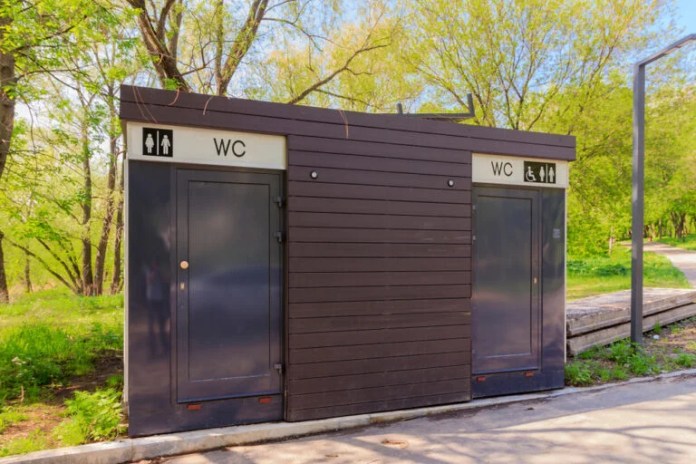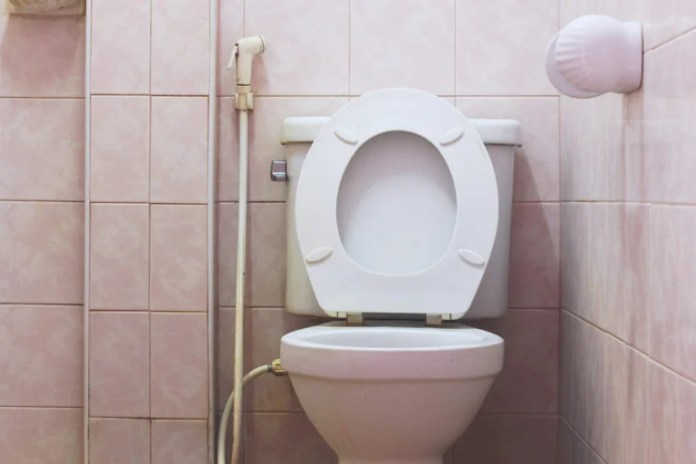The Mystery Behind the WC: Decoding the Water Closet
Have you ever seen the abbreviation “WC” emblazoned on a public restroom sign and wondered what it stands for? You are not alone in this curiosity. Across the globe, many people are trying to demystify the concept of the WC, which refers to a room equipped with a toilet and often a washbasin. The intriguing nature of this abbreviation raises questions about its origins and usage, making it a topic worth exploring.

Despite our efforts to clarify the meaning of WC, it might not prove any more illuminating than terms like restroom, bathroom, or loo. Each of these words carries its own connotation and regional preference. For instance, while “bathroom” is commonly used in American English, it’s often referred to as “toilet” in British English. As language evolves, so does the terminology we use to describe spaces dedicated to personal hygiene, reflecting individual cultures and the evolution of social norms.

In 2020, a couple named Shelby and Dylan shared a humorous TikTok video that highlighted the cultural differences in restroom terminology between Americans and Canadians. As Dylan strolled past a sign that read “washroom,” he expressed his confusion by asking, “What on earth is a washroom?” His witty commentary drew attention to the discrepancies in how various cultures refer to similar facilities. Dylan further remarked, “What are they cleaning in there? Oh, it’s just a bathroom. The only thing I ever cleanse in there is my hands,” prompting laughter from viewers and a gentle ribbing from his Canadian spouse. This humorous portrayal not only highlights the rich tapestry of language variations in restroom terminology but also underscores how humor can bridge cultural gaps.
Today, the WC designation is frequently spotted in public places like airports, restaurants, and hotels. Although it serves as another term for “lavatory” or “bathroom,” it carries a more formal tone. This is particularly useful in establishments that cater to international patrons, where conveying the correct meaning is essential for comfort and ease. For instance, a traveler in a foreign country might feel more at ease recognizing a familiar abbreviation like WC instead of trying to decipher a new term. The use of WC therefore becomes not just about linguistic choice but also about ensuring accessibility and understanding in diverse settings.
A Brief History of the Water Closet
To truly understand the significance of the WC, we must delve into its history. Before the 1800s in America, having an indoor lavatory was a luxury reserved for the wealthy. The majority of people relied on outhouses or outdoor facilities when nature called. While many homes boasted “bathrooms” intended solely for bathing, they rarely included toilets. It wasn’t until the late 1800s that indoor plumbing became more commonplace, particularly with the introduction of the water closet around 1890. These early facilities featured toilets separated from bathing areas, marking a significant shift in how people approached hygiene. The advent of indoor plumbing revolutionized living standards and sanitation practices, drastically reducing the prevalence of diseases linked to poor hygiene.
The evolution of the bathroom as we know it began in earnest in the early 20th century. This era saw a merging of bathing and toilet facilities into a single space, which not only maximized efficiency but also addressed the plumbing challenges of the time. However, this configuration introduced its own set of complications, particularly concerning privacy in shared bathrooms. The implementation of individual stalls within public restrooms emerged as a solution to these privacy concerns, paving the way for a more comfortable restroom experience.
The term “water closet” has since been redefined to signify a small, private room within a larger restroom dedicated solely to the toilet. These water closets often include a small washbasin, making them both practical and compact. This adaptation reflects the ongoing need for privacy and convenience in modern facilities, meeting the demands of both urban living and the growing emphasis on personal space. The design and functionality of water closets have also evolved, incorporating features such as automatic flushing systems and enhanced ventilation to improve user experience.
The Global Perspectives on Restroom Terminology
The conversation surrounding restroom terminology has generated much debate online, particularly on platforms like Reddit. Users engage in discussions about the rationale behind labels like “bathroom,” especially when that space lacks a bathtub. One user posed the question, “Why is a public WC called a bathroom if there is no bath?” This prompted another user to quip, “Americans might ask: ‘Why is it termed a WC (water closet) if it isn’t even a closet?’” This highlights a fascinating aspect of language—how cultural preferences shape and influence our understanding of common terms. Such discussions reveal not only our linguistic quirks but also a deeper engagement with the significance of the spaces we inhabit.
In many cultures, the terminology can vary wildly. For instance, in Russia, the term translates to “a room without windows.” This practical definition contrasts sharply with the more nuanced interpretations found in English-speaking countries. The discourse also touches upon the subjective nature of what constitutes a “bathroom,” with one commenter stating, “I believe washroom is the most suitable term. You should be cleansing in there… not relaxing.” This comment exemplifies how restroom nomenclature can be a reflection of social expectations, hygiene practices, and personal habits. The debate over restroom terminology is not merely academic; it is a reflection of how people interact with their environment and the social norms that govern such interactions.
Conclusion: What Do You Call It?
As we navigate the myriad terms used to describe spaces designated for personal hygiene, it becomes clear that cultural context plays a significant role. From “loo” in the UK to “restroom” in the US and “WC” in many other parts of the world, the way we refer to these spaces can spark humor, confusion, and even lively debates. Your experiences and preferences are valuable in this ongoing conversation about language and culture. The ongoing exploration of these terms invites us to think critically about the language we use and how it shapes our perceptions of daily life.
What are your thoughts on this topic? How do you typically refer to the room with a commode? Share your insights with us, and let’s continue this discussion to uncover how language shapes our perceptions of everyday spaces! The exploration of restroom terminology is more than a mere curiosity; it’s an insight into human behavior, culture, and our shared experiences.
“`















